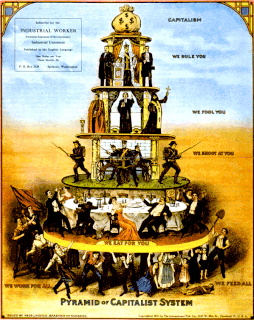
Social psychology is the scientific study of how the thoughts, feelings, and behaviors of individuals are influenced by the actual, imagined, and implied presence of others, 'imagined' and 'implied presences' referring to the internalized social norms that humans are influenced by even when they are alone.

In the field of psychology, cognitive dissonance is the perception of contradictory information. Relevant items of information include a person's actions, feelings, ideas, beliefs, and values, and things in the environment. Cognitive dissonance is typically experienced as psychological stress when persons participate in an action that goes against one or more of those things. According to this theory, when two actions or ideas are not psychologically consistent with each other, people do all in their power to change them until they become consistent. The discomfort is triggered by the person's belief clashing with new information perceived, wherein the individual tries to find a way to resolve the contradiction to reduce his or her discomfort.
The bandwagon effect is the term used to describe the tendency for people to adopt certain behaviors, styles, or attitudes simply because others are doing so.

Self-perception theory (SPT) is an account of attitude formation developed by psychologist Daryl Bem. It asserts that people develop their attitudes by observing their own behavior and concluding what attitudes must have caused it. The theory is counterintuitive in nature, as the conventional wisdom is that attitudes determine behaviors. Furthermore, the theory suggests that people induce attitudes without accessing internal cognition and mood states. The person interprets their own overt behaviors rationally in the same way they attempt to explain others' behaviors.

Elliot Aronson is an American psychologist who has carried out experiments on the theory of cognitive dissonance, and invented the Jigsaw Classroom, a cooperative teaching technique which facilitates learning while reducing interethnic hostility and prejudice. In his 1972 social psychology textbook, The Social Animal, he stated Aronson's First Law: "People who do crazy things are not necessarily crazy," thus asserting the importance of situational factors in bizarre behavior. He is the only person in the 120-year history of the American Psychological Association to have won all three of its major awards: for writing, for teaching, and for research. In 2007 he received the William James Award for Lifetime Achievement from the Association for Psychological Science, in which he was cited as the scientist who "fundamentally changed the way we look at everyday life.” A Review of General Psychology survey, published in 2002, ranked Aronson as the 78th most cited psychologist of the 20th century. He officially retired in 1994 but continues to teach and write.

Political psychology is an interdisciplinary academic field, dedicated to understanding politics, politicians and political behavior from a psychological perspective, and psychological processes using socio-political perspectives. The relationship between politics and psychology is considered bidirectional, with psychology being used as a lens for understanding politics and politics being used as a lens for understanding psychology. As an interdisciplinary field, political psychology borrows from a wide range of other disciplines, including: anthropology, sociology, international relations, economics, philosophy, media, journalism and history.
Attitudes are associated beliefs and behaviors towards some object. They are not stable, and because of the communication and behavior of other people, are subject to change by social influences, as well as by the individual's motivation to maintain cognitive consistency when cognitive dissonance occurs—when two attitudes or attitude and behavior conflict. Attitudes and attitude objects are functions of affective and cognitive components. It has been suggested that the inter-structural composition of an associative network can be altered by the activation of a single node. Thus, by activating an affective or emotional node, attitude change may be possible, though affective and cognitive components tend to be intertwined.

Carol Anne Tavris is an American social psychologist and feminist. She has devoted her career to writing and lecturing about the contributions of psychological science to the beliefs and practices that guide people's lives, and to criticizing "psychobabble," "biobunk," and pseudoscience. Her many writings have dealt with critical thinking, cognitive dissonance, anger, gender, and other topics in psychology.
Self-propaganda is the way in which people convince themselves of something regardless of the evidence against it. They will go over their side of the argument without considering the alternative arguments.
System justification theory (SJT) is a theory within social psychology that system-justifying beliefs serve a psychologically palliative function. It proposes that people have several underlying needs, which vary from individual to individual, that can be satisfied by the defense and justification of the status quo, even when the system may be disadvantageous to certain people. People have epistemic, existential, and relational needs that are met by and manifest as ideological support for the prevailing structure of social, economic, and political norms. Need for order and stability, and thus resistance to change or alternatives, for example, can be a motivator for individuals to see the status quo as good, legitimate, and even desirable.

A number of propaganda techniques based on social psychological research are used to generate propaganda. Many of these same techniques can be classified as logical fallacies, since propagandists use arguments that, while sometimes convincing, are not necessarily valid.

Disconfirmed expectancy is a psychological term for what is commonly known as a failed prophecy. According to the American social psychologist Leon Festinger's theory of cognitive dissonance, disconfirmed expectancies create a state of psychological discomfort because the outcome contradicts expectancy. Upon recognizing the falsification of an expected event an individual will experience the competing cognitions, "I believe [X]," and, "I observed [Y]." The individual must either discard the now disconfirmed belief or justify why it has not actually been disconfirmed. As such, disconfirmed expectancy and the factors surrounding the individual's consequent actions have been studied in various settings.
Selective exposure is a theory within the practice of psychology, often used in media and communication research, that historically refers to individuals' tendency to favor information which reinforces their pre-existing views while avoiding contradictory information. Selective exposure has also been known and defined as "congeniality bias" or "confirmation bias" in various texts throughout the years.
The effort heuristic is a mental rule of thumb in which the quality or worth of an object is determined from the perceived amount of effort that went into producing that object. In brief, the effort heuristic follows a tendency to judge objects that took a longer time to produce to be of higher value. The more effort invested in an object, the better it is deemed to be. This is especially true in situations where value is difficult to assess or the evaluator lacks expertise in the appraisement of an item. People use whatever information is available to them and effort is thought to generally be a reliable indicator of quality.
Self-justification describes how, when a person encounters cognitive dissonance, or a situation in which a person's behavior is inconsistent with their beliefs (hypocrisy), that person tends to justify the behavior and deny any negative feedback associated with the behavior.
Groupthink is a psychological phenomenon that occurs within a group of people in which the desire for harmony or conformity in the group results in an irrational or dysfunctional decision-making outcome. Cohesiveness, or the desire for cohesiveness, in a group may produce a tendency among its members to agree at all costs. This causes the group to minimize conflict and reach a consensus decision without critical evaluation.
Doublethink is a process of indoctrination whereby the subject is expected to simultaneously accept two mutually contradictory beliefs as correct, often in contravention to one's own memories or sense of reality. Doublethink is related to, but differs from, hypocrisy.
Ambivalent prejudice is a social psychological theory that states that, when people become aware that they have conflicting beliefs about an outgroup, they experience an unpleasant mental feeling generally referred to as cognitive dissonance. These feelings are brought about because the individual on one hand believes in humanitarian virtues such as helping those in need, but on the other hand also believes in individualistic virtues such as working hard to improve one's life.
Emily E. Balcetis is an American social psychologist and Associate Professor of Psychology at New York University. Her research focuses on people's perception of world and how their motivations, goals, and emotions influence it, especially with regards to visual perception.
Political cognition refers to the study of how individuals come to understand the political world, and how this understanding leads to political behavior. Some of the processes studied under the umbrella of political cognition include attention, interpretation, judgment, and memory. Most of the advancements in the area have been made by scholars in the fields of social psychology, political science, and communication studies.



